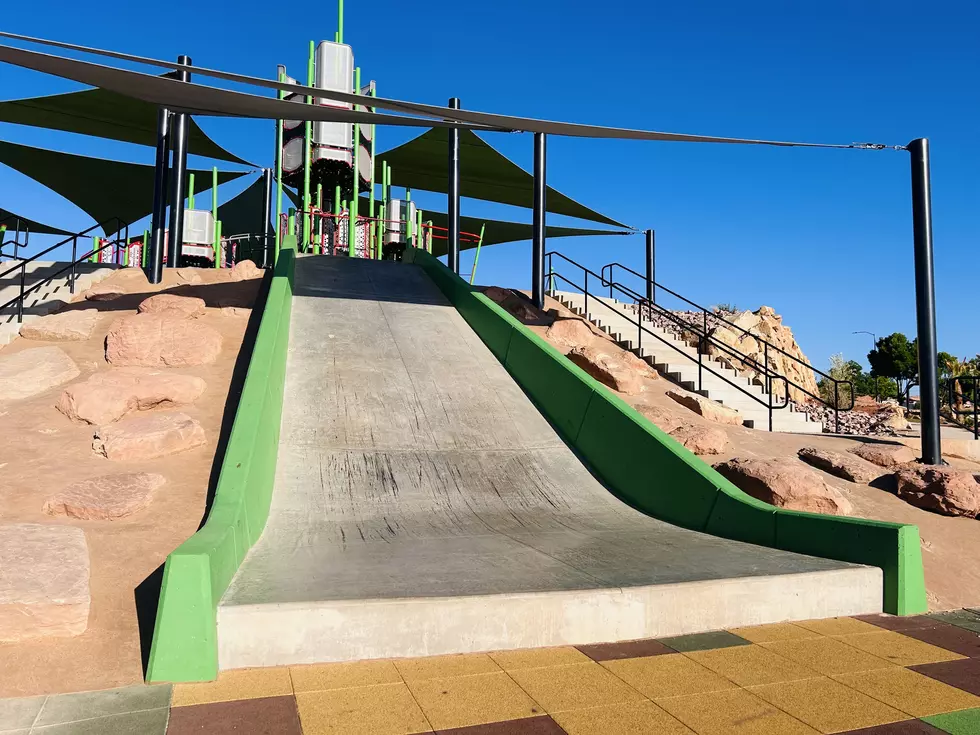
The Pros and Cons of St. George Police Department’s Bodycams
St. George Police Department Chief Kyle Whitehead spent most of his career not having to worry about whether his bodycam was turned on when he had an encounter with a criminal.
Now, bodycams are mandatory for St. George City, but Whitehead said on The Andy Griffin Show Tuesday that it hasn't really changed the way policemen act.
"Mostly it's made the job easier," he said. "It's definitely something that's very useful in court. It's great to have that recording and to be able to document everything accurately in your report.
"I've been with SGPD 23 years and we've only had body cameras since 2016. I've worked with a lot of officers on a lot of cases and I never saw any misconduct or bending the rules. These are good people and the bodycams only serve to protect them."
Nationwide, about 50 percent of police forces have mandatory body cameras, although that number jumps to 80 percent when looking at large (city) police departments.
Whitehead said the intention of body-worn cameras is noble and he has observed the public in general being more well-behaved if they know the bodycam is recording.
Here are some findings, anecdotally, that help support the use of body-worn cameras by police officers (from the National Institute of Justice website):
Six of the body-worn cameras programs were rated promising —
- CrimeSolutions rated the use of body-worn cameras to reduce citizen fatality rates as Promising. Agencies that acquired cameras had statistically significant decreases in fatal police–citizen encounters after three years, compared with agencies that did not acquire cameras. Read the program profile Effects of Body-Worn Cameras on Reducing Rates of Citizen Fatalities.
- In Birmingham, UK, evaluators found that deploying body-worn cameras resulted in a statistically significant reduction in citizen injury, but no statistically significant reduction in officer use of force or injury. Read the program profile Police Body-Worn Cameras (Birmingham South, UK).
- In Rialto, CA, evaluators found a statistically significant reduction in police use-of-force but no significant difference in citizen complaints. Read the program profile Police Body-Worn Cameras (Rialto, Calif.).
- In Las Vegas, Nevada, and evaluation of the Metropolitan Police Department’s use of body-worn cameras revealed that the use of body-worn cameras resulted in a statistically significant reduction in both complaints and use of force. Read the program profile Body-Worn Cameras (Las Vegas Metropolitan Police Department.
- In Phoenix, AZ, evaluators found body-worn camera use resulted in statistically significant decreases in citizen complaints, and there were mixed results regarding camera use on arrest rates. There were no statistically significant differences in citizen resistance. There was a statistically significant increase in use of force, and less proactive, officer-initiated contact. Read the program profile Police Body-Worn Cameras (Phoenix, Arizona).
- In a separate study in Phoenix, AZ, evaluators looked at a program that equips police with on-officer cameras to record contacts with civilians during intimate-partner violence incidents. Camera use was statistically significantly more likely to result in arrests, charges filed, cases furthered, and both guilty pleas and verdicts. There was no statistically significant difference in sentence length. However, there was a statistically significantly greater reduction in case processing time in cases not involving a camera. Read the program profile Police Body-Worn Cameras for Intimate-Partner Violence Cases (Phoenix, Ariz.).
Three of the body-worn camera programs evaluated were found to have no, limited, or even negative effects —
- In Washington, DC, evaluators found no statistically significant differences in police use-of-force, nor the number of citizen complaints. Read the program profile Police Body-Worn Cameras (Washington, D.C.).
- A multi-site evaluation of eight departments in the US and the UK found, overall, found no statistically significant differences in police use of force, number of citizen complaints, or number of arrests for disorderly conduct for police officers who wore body-worn cameras, compared with officers who did not wear them. Read the program profile Police Body-Worn Cameras in Eight Police Departments in the United Kingdom and United States.
- In New York City, camera use had no statistically significant effects on number of arrests, arrests with force, and summonses issued after 1 year. Officers wearing cameras had statistically significant reductions in complaints filed against them and made more stop reports. Camera use resulted in a statistically significantly reduced likelihood of lawful stops and frisks but fewer subjects searched. Read the program profile New York City Police Department Body-Worn Cameras’ Effects on Civility and Lawfulness of Police–Citizen Encounters and Policing Activities.
There are also logistical problems. The body-worn cameras are expensive ($500 each to start, plus server/storage subscription fees that can be exorbitant).
Storing the data, and then accessing it can be nightmarish as well.
Ultimately, the technology will come around and the use of body-worn cameras will be commonplace, even ubiquitous.
SGPD bodycams have to be activated manually by the police officer. Also, according to Utah statute,
- An officer shall wear the body-worn camera so that it is clearly visible to the person being recorded.
- An officer shall activate the body-worn camera prior to any law enforcement encounter, or as soon as reasonably possible.
- An officer shall record in an uninterrupted manner until after the conclusion of a law enforcement encounter, except as an interruption of a recording is allowed under this section.
But even now, the use of body-worn cameras is becoming a valuable tool in police work.
"I think it keeps everybody on better behavior when they know that there's a camera that's recording, officers and the public alike" Whitehead said, "We noticed as soon as we went to cameras, people seemed to be a little bit calmer."
LOOK: The 25 least expensive states to live in
More From KDXU 890 & 92.5









